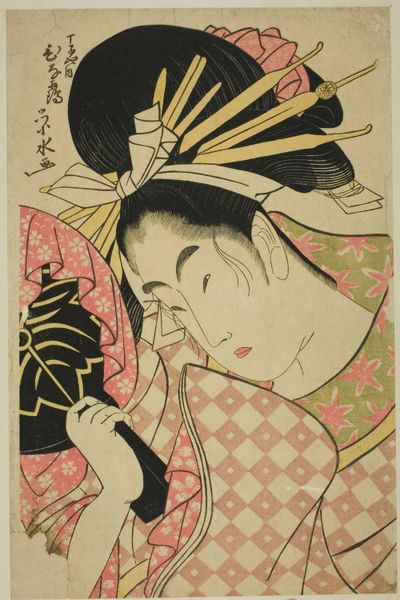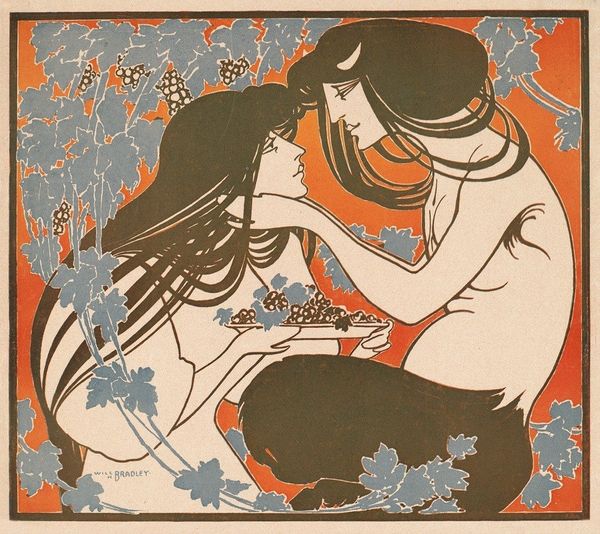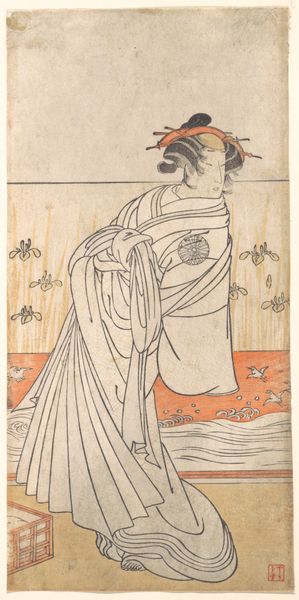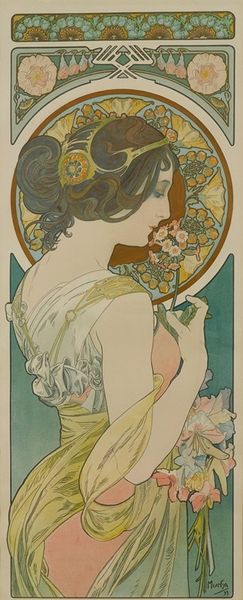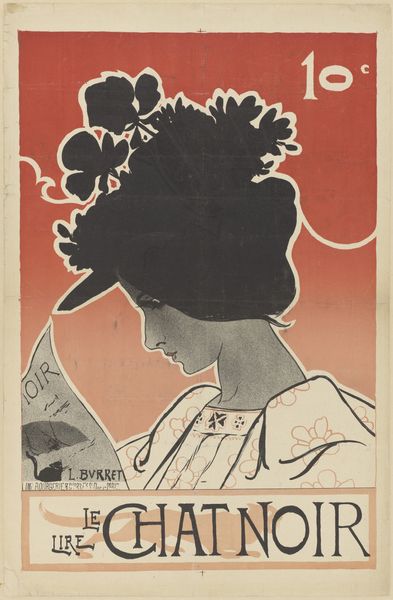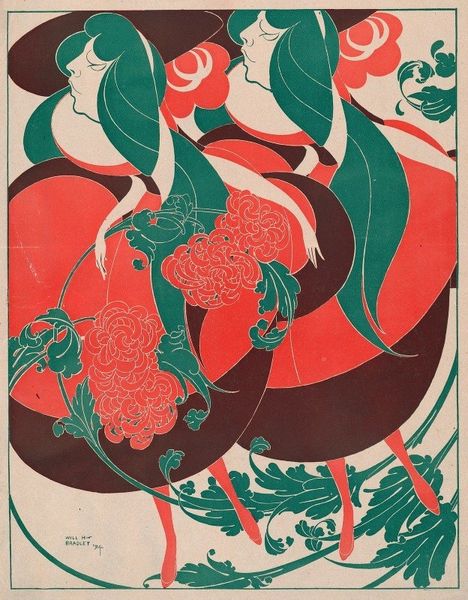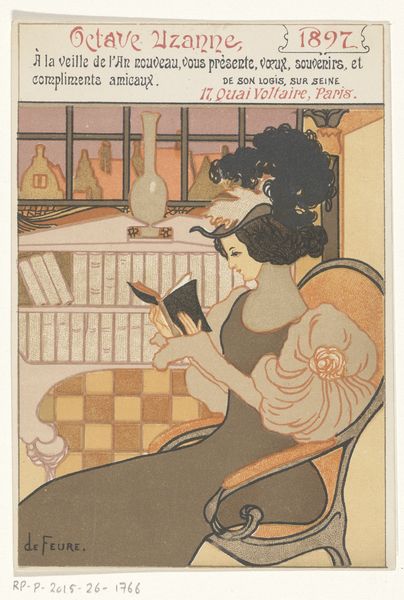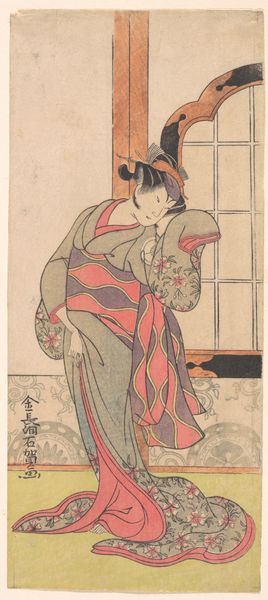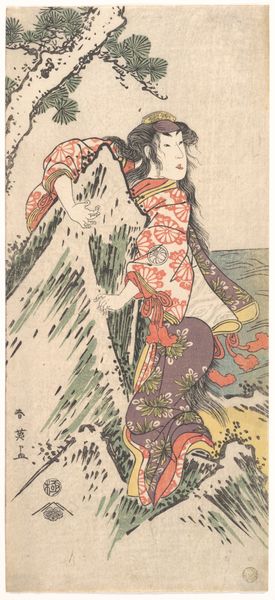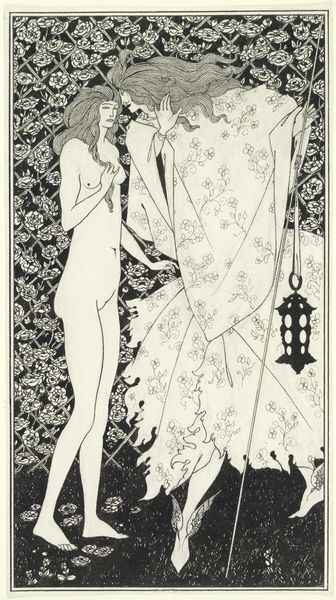
#
art-nouveau
# print
#
japonisme
Dimensions: height 252 mm, width 185 mm
Copyright: Rijks Museum: Open Domain
Curator: This is "Februari 1909", a print possibly created in 1909 by Kaburaki Kiyokata. It’s currently housed right here at the Rijksmuseum. Editor: Wow, the colors hit you right away, don't they? Red, green, black... and that pale skin tone. It's dreamy, like something out of a slightly naughty fairy tale. Curator: Indeed. The composition is quite striking, utilizing Japonisme aesthetics. We see a blend of Western Art Nouveau elements with traditional Japanese printmaking. Consider the flat planes of color, the strong outlines, and the integration of text. Editor: Right. I get a poster vibe – that Alphonse Mucha thing. All swirling hair and suggestive glances. Is she an artist herself? That paintbrush, those stars...is that like a bohemian statement? I kind of want her life, tattoos and all. Curator: The presence of stars does suggest a form of artistic enlightenment, the birth of creativity, or an ethereal beauty, contrasted with the grounded depiction of her nude form. The print challenges and blends artistic and cultural ideals, reflecting an East meets West sentiment prevalent at the time. Note the contrast between the delicate linework and the bold colors; it speaks volumes about the synthesis of different artistic vocabularies. Editor: So true! Plus, it looks unfinished? Or is that the point? All the wispy lines, those uncolored stars...gives it this raw, unfiltered energy. It makes you want to create something yourself. Throw paint at a canvas or something equally dramatic. Curator: Perhaps the intention was to emphasize process rather than perfect resolution. "Februari 1909" acts as a reminder of the dialogues that transpire during artistic creation and challenges what truly dictates finitude. Editor: Ultimately it makes me feel restless, alive, and inspired. What more can you ask from a work of art? Curator: Well, my viewing habits and intellectual engagement may not precisely mirror those criteria, I certainly find Kiyokata’s work successful in the complexity of its conceptual engagement.
Comments
No comments
Be the first to comment and join the conversation on the ultimate creative platform.
